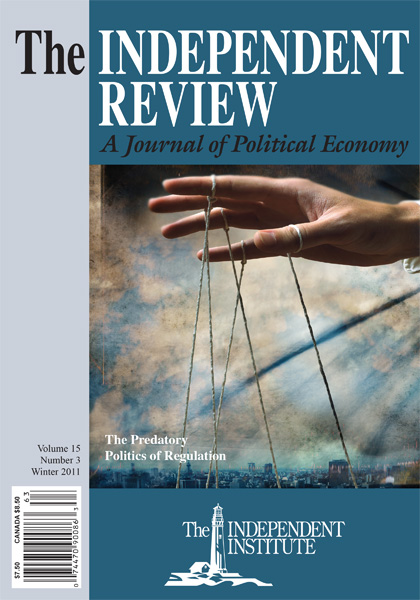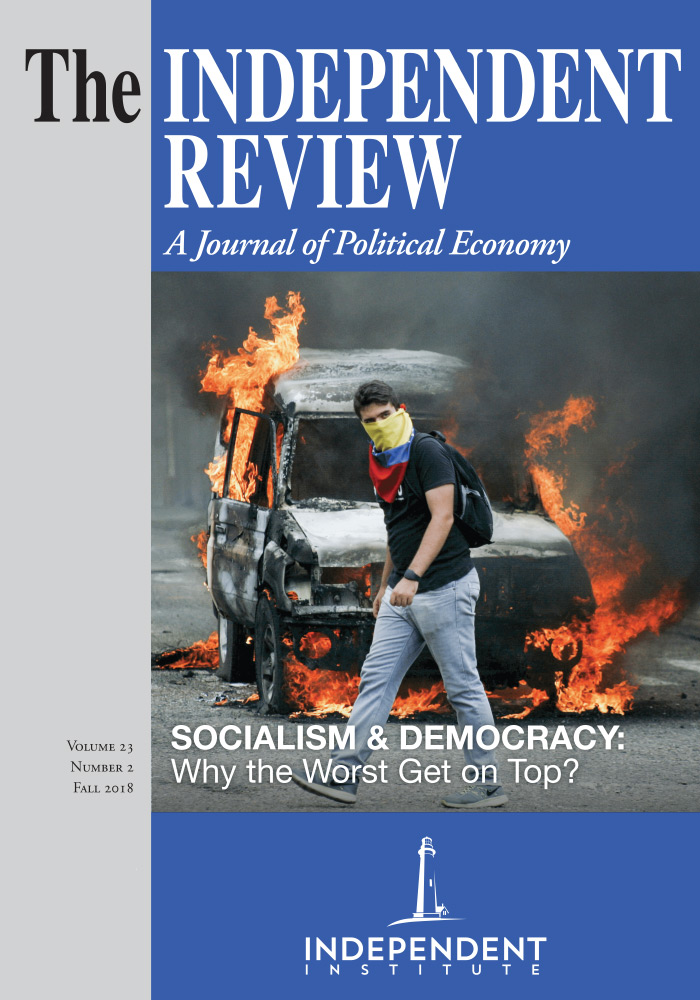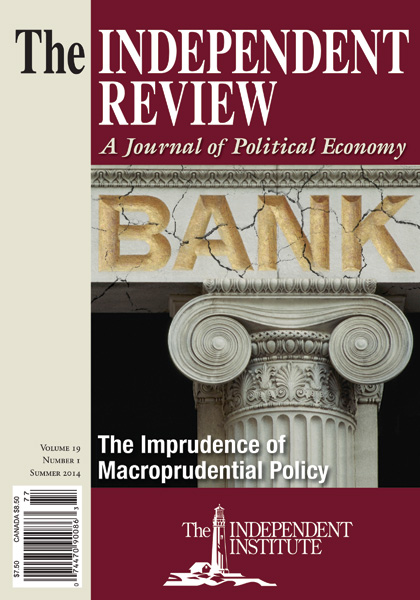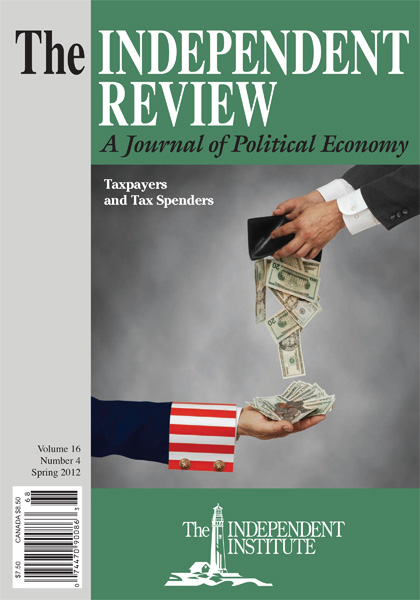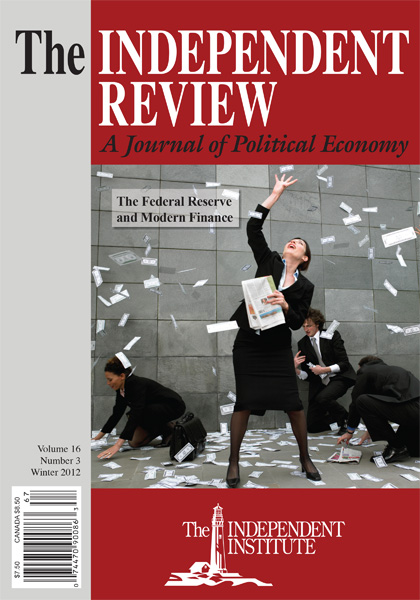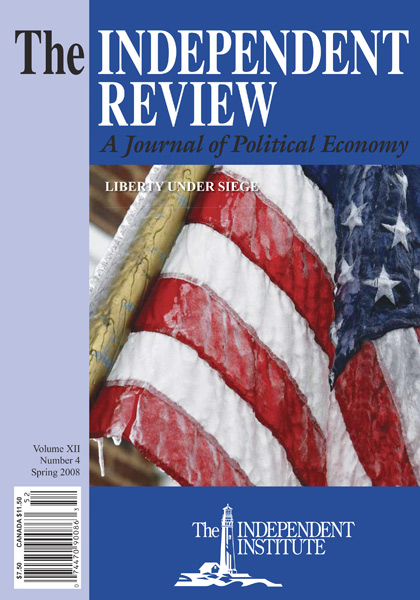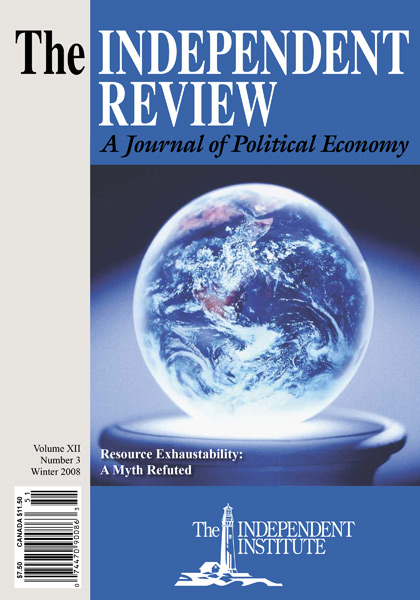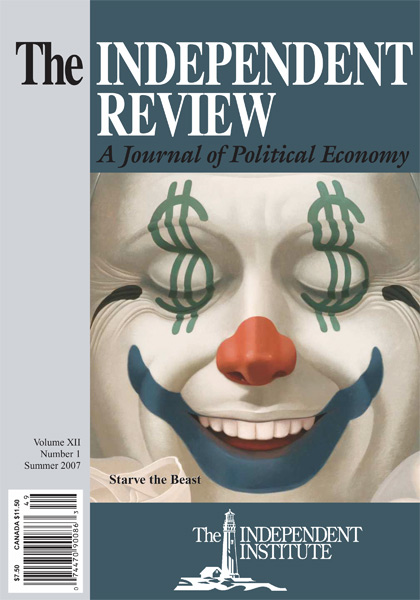Paul Samuelson (1915–2009) left an indelible mark on the economics profession with his seemingly scientific treatise Foundations of Economic Analysis. He also did as much as anyone to make modern economic theory a sterile and irrelevant exercise in academic autoeroticism.
Article
Paul A. Samuelson died on December 13, 2009, at the age of 94. For more than half a century, he was a towering figure in the economics profession and, to some degree, in the wider world. When I was first learning economics, in the 1960s, Samuelson was held up by my teachers as the greatest living economist—a genius, they used to say—and his way of doing economics was generally regarded as virtually defining how to carry out economic analysis scientifically. In the course of my undergraduate and graduate training, I was never given any reason to doubt that assessment.
Indeed, a memorably painful part of my graduate education consisted of my attempts to read and understand Samuelson’s landmark book Foundations of Economic Analysis (1947), a treatise in mathematical economic theory, patterned after classical thermodynamics, which set the tone for much of what the cleverest mainstream economists would do for decades to come. The protocol became: build a mathematical model of abstract actors engaged in constrained maximization or minimization of an objective function; prove that the model has a stable equilibrium; show how the model’s equilibrium conditions change when its parameters are changed (the so-called method of comparative statics).
I also had the pleasure—if that is the right word—of meeting Samuelson in person once, early in 1968, when I visited the economics department at MIT as a candidate for a job there. At a luncheon seminar with Samuelson and several other members of the department, I experienced firsthand the famous Samuelsonian wit and arrogance. Although the members of the group bantered and joked at one another’s expense during the luncheon, as academics commonly do, it was clear to me that Samuelson’s jokes at a colleague’s expense dominated a colleague’s jokes at his expense. This pecking order came as no surprise to me. I was taken aback, however, that the great man also made jokes at my expense. Of course, as an apprehensive and insecure 24 year old looking for a job, I made no jokes at anybody’s expense, and certainly not at Samuelson’s. More than forty years later, and somewhat wiser in the often ill-mannered ways of academia, I remain disappointed that the acclaimed “greatest living economist,” a man who only two years later would become the first American to receive the Nobel prize in economics, would choose to make sport of a mere graduate student.
Mathematics Is the Language, Induction Is the Method
Anyone who has read Samuelson’s articles and books, however, knows that his arrogance often stands in prominent display. Whether he was the greatest living economist or not, he often expressed himself with the kind of Olympian condescension that strongly suggests he believed himself to be Numero Uno. I was struck by this quality most recently in reading, strange to say, his 1952 article “Economic Theory and Mathematics—An Appraisal.” At the end of the first paragraph, Samuelson writes, “I firmly believe in the virtues of understatement and lack of pretension.” Upon encountering this affirmation of authorial modesty, I nearly burst out laughing.
Although Samuelson declares that he comes “not to praise mathematics, but rather to slightly debunk its use in economics,” the thrust of his article can scarcely be described as debunking. Indeed, in my view, he makes grandiose and indefensible claims on behalf of the use of mathematics in economics. I am no philosopher, but I venture to say also that he makes indefensible claims about mathematics itself—a point that I will leave for better qualified heads to judge. Samuelson’s main claim is that “in deepest logic,” mathematics and prose “are strictly identical” (56). My not-very-highly-tutored philosophical hunch is that this claim will no longer be regarded as holding water, if it ever was so regarded. Yet, like many of Samuelson’s declarations, it is expressed with the sort of absolute confidence typical of the early generations of logical positivists.
Samuelson maintains that “[e]very science is based squarely on induction—on observation of empirical facts. . . . [D]eduction has the modest linguistic role of translating certain empirical hypotheses into their ‘logical equivalents’” (57). It seems obvious that for him, as for his legions of disciples, an a priori economic theory, such as the praxeological theory that Ludwig von Mises expounds in Human Action (1949), does not qualify as science. Although he does not mention Mises in the article, one suspects that he might have had the great Austrian economist in mind when he wrote, “[N]o a priori empirical truths can exist in any field. If a thing has a priori irrefutable truth, it must be empty of empirical content” (62). He then affirms, with characteristic haughtiness, that “at the rough and ready level that concerns the scientist in his everyday work,” this view is “widely recognized by scientists in every discipline. The only exceptions are to be found in certain backwaters of economics, and I shall not here do more than point the finger of scorn at those who carry into the
twentieth century ideas that were not very good even in their earlier heyday” (62).
Samuelson contra the Austrian School
In the foreword to the 1965 paperback reprint of Foundations, Samuelson explicitly identifies Mises in connection with what he what he had previously derided as “certain backwaters of economics”:
Those concerned with general problems of philosophy of science and its methodology may find modern economics of considerable interest. By this I do not mean that the methodological views of the venerable economist Ludwig von Mises are more interesting than the positivistic views of his deceased brother, Richard von Mises, the distinguished physicist and mathematician. In my view they definitely are not. (ix)
One wonders what status Samuelson would accord the Action Axiom—the statement that human beings have ends and use means in conscious attempts to attain those ends. Would he deny that it is apodictically certain a priori? And would he also deny that it is empirically valid?
In a 1957 defense of Misesian methodology, Murray N. Rothbard notes, “Whether we consider the Action Axiom ‘a priori’ or ‘empirical’ depends on our ultimate philosophical position” (317–18). He observes that Mises, taking a Kantian view, regards the axiom as “a law of thought and therefore a categorical truth a priori to all experience” (318). In contrast, Rothbard considers the axiom “a law of reality rather than a law of thought, and hence ‘empirical’ rather than ‘a priori’” (318), although he concedes that “this type of ‘empiricism’ is so out of step with modern empiricism that I may just as well continue to call it a priori” for the arguments at issue. He explicates the axiom by saying: “(1) it is a law of reality that is not conceivably falsifiable, and yet is empirically meaningful and true; (2) it rests on universal inner experience, and not simply on external experience, i.e., its evidence is reflective rather than physical; and (3) it is clearly a priori to complex historical events” (318, footnotes omitted). Samuelson does not deign to consider these issues, opting instead for supercilious derision.
Samuelson does mention one great Austrian economist, indeed, the founder of the Austrian School himself, Carl Menger. His remarks at this point merit extended quotation. “Jevons, Walras, and Menger,” he writes, “each independently arrived at the so-called ‘theory of subjective value.’ And . . . Menger did arrive at his formulation without the use of mathematics. But,” he continues,
I should point out that a recent rereading of the excellent English translation of Menger’s 1871 work convinces me that it is the least important of the three works cited; and that its relative neglect by modern writers was not simply the result of bad luck or scholarly negligence. I should also add that the important revolution of the 1870’s had little really to do with either subjective value and utility or with marginalism; rather it consisted of the perfecting of the general relations of supply and demand. It culminated in Walrasian general equilibrium. And we are forced to agree with Schumpeter’s appraisal of Walras as the greatest of theorists—not because he used mathematics, since the methods used are really quite elementary—but because of the key importance of the concept of general equilibrium itself. (1952, 61)
Samuelson’s evaluation, one might venture to say, has matters exactly backward. He fails to see how and why Menger’s development of marginal utility and related economic theory is actually superior to the formulations of Jevons and Walras. On this question, the reader can do no better than to consult Jörg Guido Hülsmann’s splendid dehomogenization of the three marginalist pioneers’ views in his magnificent, recently published biography Mises: The Last Knight of Liberalism (125–36).
Hülsmann quotes William Jaffé’s comments, which are so apt that I quote them again here:
Menger kept too close to the real world for either the verbal or symbolic formulation of the theory; and in the real world he saw no sharply defined points of equilibrium, but rather bounded indeterminacies not only in isolated bilateral barter but also in competitive market trading. . . . With his attention unswervingly fixed on reality, Menger could not, and did not, abstract from the difficulties traders face in any attempt to obtain all the information required for anything like a pinpoint equilibrium determination of market prices to emerge, nor did his approach permit him to abstract from the uncertainties that veil the future, even the near future in the conscious anticipation of which most present transactions take place. (qtd. in Hülsmann 2007, 135)
In this light, we see clearly that Samuelson’s positivist insistence that economic science must rest on empirical facts clashes with his expressed preference for abstract, perfect-information general equilibrium, à la Jevons and Walras, in lieu of Menger’s utterly realistic foundation for economic reasoning.
Methodological Monism versus Methodological Dualism
Nothing has done more to render modern economic theory a sterile and irrelevant exercise in autoeroticism than its practitioners’ obsession with mathematical, general equilibrium models. Not only does this focus result in the futile spinning of mental wheels by mathematical pseudo-economists, but it has pernicious consequences for policy formulation because, as James M. Buchanan has observed, it gives rise to “the most sophisticated fallacy in economic theory, the notion that because certain relationships hold in equilibrium [in the model] the forced interferences designed to implement these relationships [in the real world] will, in fact, be desirable” (1979, 83).
Samuelson writes that although mathematicians occasionally make mistakes, “it is surprising how rare pure mistakes in logic are.” To his credit, he then recognizes a highly important point: “Where the really big mistakes are made is in the formulation of premises.” He counts it “one of the advantages of the mathematical medium,” however, that he and the other model builders “are forced to lay our cards on the table so that all can see our premises” (1952, 64). This statement appears at first glance to place mathematical modeling in a favorable light. Yet what advantage is gained if the premises are clearly laid out, seen by everyone to be wholly artificial, otherworldly, or even impossible, and then the deductive game proceeds as if an economic theory based on such premises were perfectly acceptable merely because its premises are so visible and clearly specified? Anyone who has ever mocked the scholastics for counting angels on the head of a pin should try to read an article in the Journal of Economic Theory or any other leading outlet for mainstream economic modeling. Talk about a parallel universe!
“There are,” Samuelson insists, “no separate methodological problems that face the social scientist different in kind from those that face any other scientist” (1952, 61). This claim flies in the face of what everyone ought to sense intuitively: that human beings, who have purposes, choose means of serving them, change their purposes from time to time, and on occasion devise completely new means, differ fundamentally from electrons, molecules, and light waves (or are they particles?).
Mises expounded methodological dualism persuasively in many of his writings. This exposition appears, for example, at the very beginning of his important and unjustly ignored book Theory and History (1957), where he notes that given our ignorance of “how external events—physical, chemical, and physiological—affect human thoughts, ideas, and judgments of value,” the domain of knowledge is necessarily split “into two separate fields, the realm of external events, commonly called nature, and the realm of human thought and action” (1).
He continues: “The sciences of human action,” properly construed, “start from the fact that man purposefully aims at ends he has chosen. It is precisely this that all brands of positivism, behaviorism, and panphysicalism want either to deny altogether or to pass over in silence” (3)—or, as in Samuelson’s case, to dismiss with ridicule and scorn as unworthy of economic scientists in the modern age. Sad to say, not all change is true progress, and in modern mainstream economics—which we might justly denominate Samuelsonian economics—much of the change in professional precepts and practices has been manifestly for the worse.
Coda
Having suffered through my Samuelsonian training in graduate school, I immediately began to move away from it once I became an economist. In fact, I increasingly grew to believe that the worst aspects of modern economics owe more to Samuelson than to any other single economist. Eventually I became convinced that the modern mainstream’s so-called scientific economics is not truly scientific at all, but a species of scientism—the misapplication of methods developed for the study of material reality to the study of human choice and cooperation.
Seventeen years ago, Reason magazine invited a number of writers, including me, to contribute a brief entry for a feature called “Know Thy Enemy.” The idea was that each of us would “suggest a book published in the last 50 years that is significant because it has helped promote wrongheaded ideas with serious consequences” (1993, 32). For my contribution, I selected Samuelson’s Foundations. If I had to identify such a book today, I still could not think of a more apposite choice.
References
Buchanan, James M. 1979. General Implications of Subjectivism in Economics. In What Should Economists Do? 81-91. Indianapolis: Liberty Fund.
Higgs, Robert. 1993. Know Thy Enemy [Special Book Section]. Reason 25 (December): 38.
Hülsmann, Jörg Guido. 2007. Mises: The Last Knight of Liberalism. Auburn, Ala.: Ludwig von Mises Institute.
Mises, Ludwig von. 1949. Human Action: A Treatise on Economics. New Haven: Yale University Press.
———. 1957. Theory and History: An Interpretation of Social and Economic Evolution. New Haven: Yale University Press.
Rothbard, Murray N. 1957. In Defense of “Extreme Apriorism.” Southern Economic Journal 23 (January): 314-20.
Samuelson, Paul Anthony. 1947. Foundations of Economic Analysis. Cambridge,Mass.: Harvard University Press.
———. 1952. Economic Theory and Mathematics—An Appraisal. American Economic Review 42 (May): 56–66.
———. 1965. Foundations of Economic Analysis. Paperback reprint; New York: Atheneum.
| Other Independent Review articles by Robert Higgs | ||
| Fall 2019 | Pressure-Release Valves in Participatory Fascism | |
| Winter 2018/19 | Two Worlds: Politics and Everything Else | |
| Fall 2018 | Against the Whole Concept and Construction of the Balance of International Payments | |
| [View All (62)] | ||

